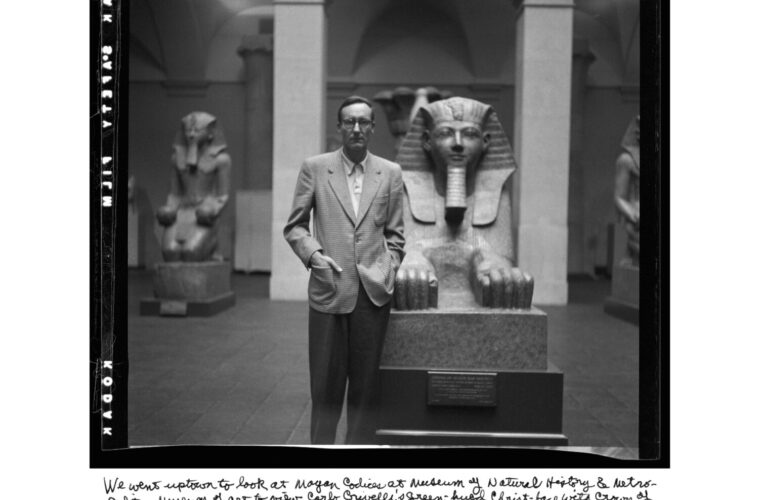A new exhibition at Fahey/Klein Gallery asks us to consider the iconic Beat poet Allen Ginsberg in a new light — several new lights, actually. Beloved for his evocative, sparsely opulent, raw and refined words on the American soul and his personal status as a counterculture touchstone, Ginsberg was also periodically enamored of photography. First in the 1950s and again in the 1980s, the poet supplemented the observational portraiture and love of rebellious, enigmatic characters found on his pages for that which might be found behind a camera’s lens.
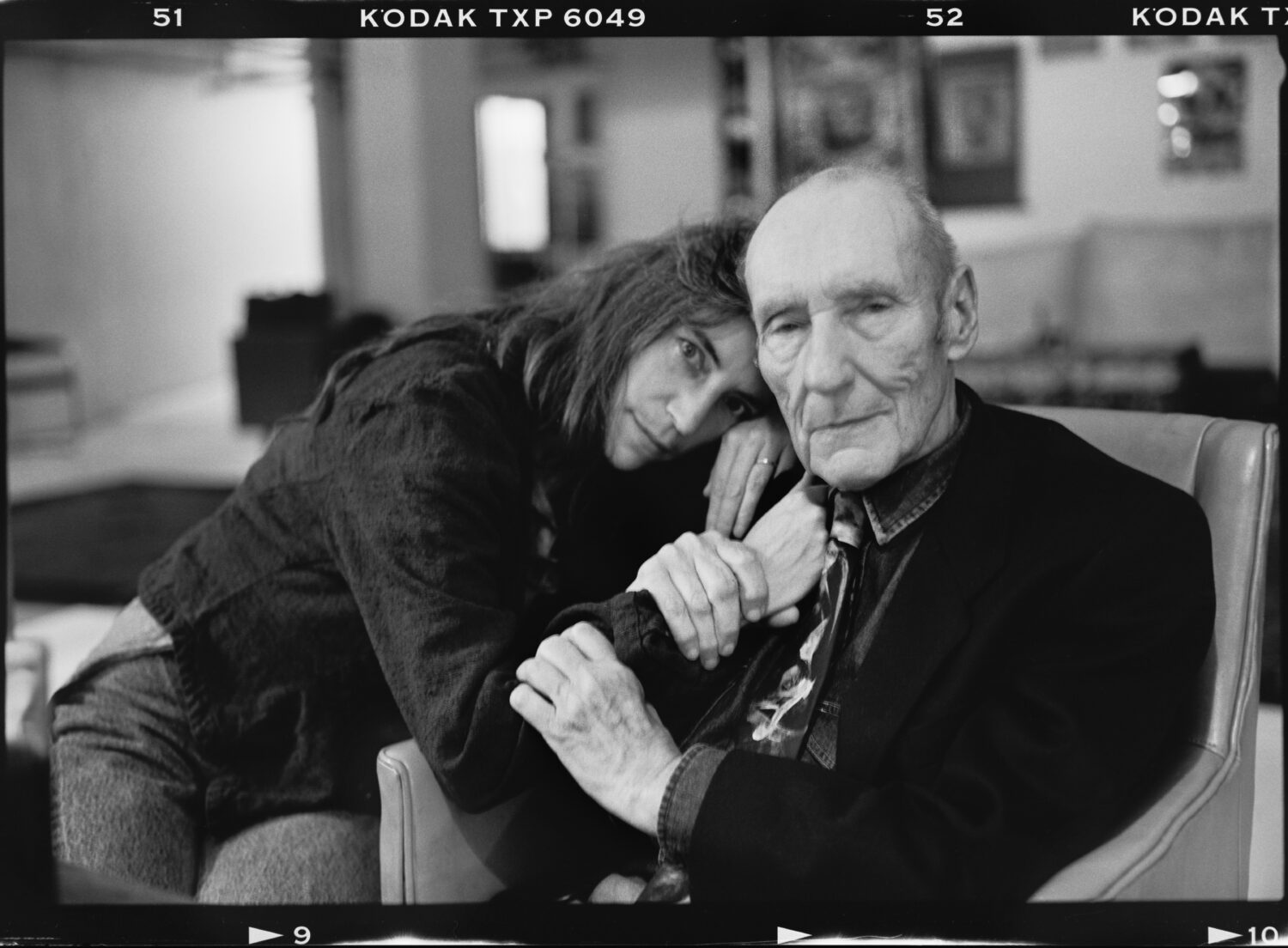
Allen Ginsberg: Patti Smith & William S. Burroughs, The Bunker, September 20, 1995 (©Allen Ginsberg, courtesy of FaheyKlein Gallery, Los Angeles)
In the rich, velvety tones of black and white film — with what proved to be impeccable instincts for composing pictorial space and perceiving depth of environment, the power of ordinary things, the impact of architectural space, and the dramatic playfulness of light — Ginsberg captured the quiet, assertive self in each of his subjects. And what subjects they were. Beat gods like Jack Kerouac, William S. Burroughs, Neal Cassady, of course; and later photographers Robert Frank and Bernice Abbott, artists Francesco Clemente, Ai Weiwei, Jean-Michel Basquiat, David Hockney and Keith Haring; writers Amiri Baraka, Toni Morrison, Arthur Miller and Patti Smith; and many more denizens of the (mostly) New York art and poetry worlds, both known and unknown to history.
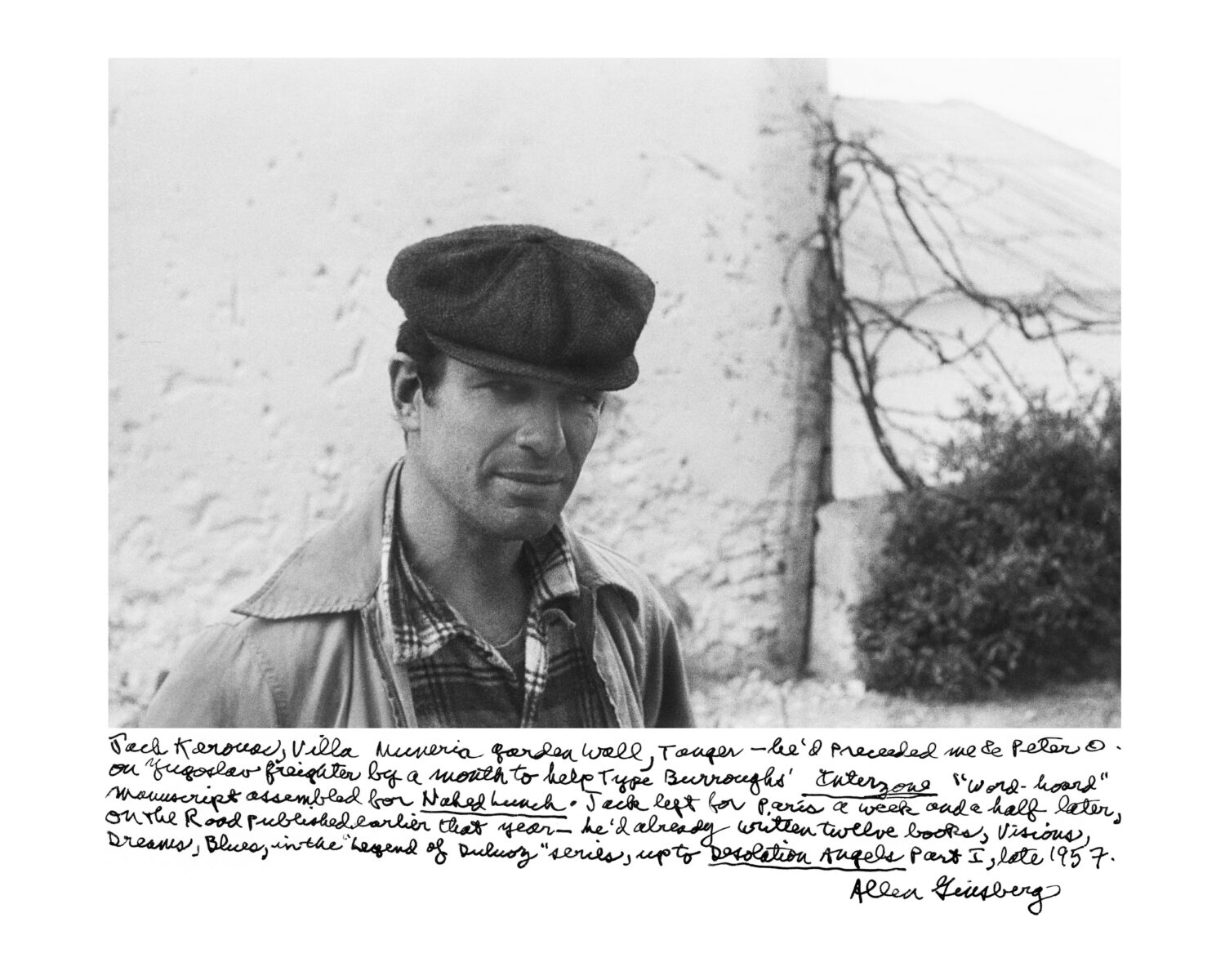
Allen Ginsberg: Jack Kerouac Villa Muniria Garden, Tangier, 1957 (©Allen Ginsberg, courtesy of FaheyKlein Gallery, Los Angeles)
The pictures in Muses & Self, like his poems, are not fancy, not pretty, not precious. Instead they are frank and full of bravery and emotion, constructed with a sort of asymmetrical balance that keeps the mind engaged but leaves it room to wander inside the shapes of language’s maze. Not intimate in the sense of being casual or confessional, the photographs are instead intimate in the way of souls being quiet together, paying profound, piercing attention to one another and the world around. Together they form a fascinating diary of his social circle and an enchanting corollary to the poetry he was writing at the time. But there’s still a whole other dimension to the exhibition to explore — in a way, it’s a whole new dimension of Ginsberg’s mind — the future. Strange to consider since he died in 1997. But here we are.
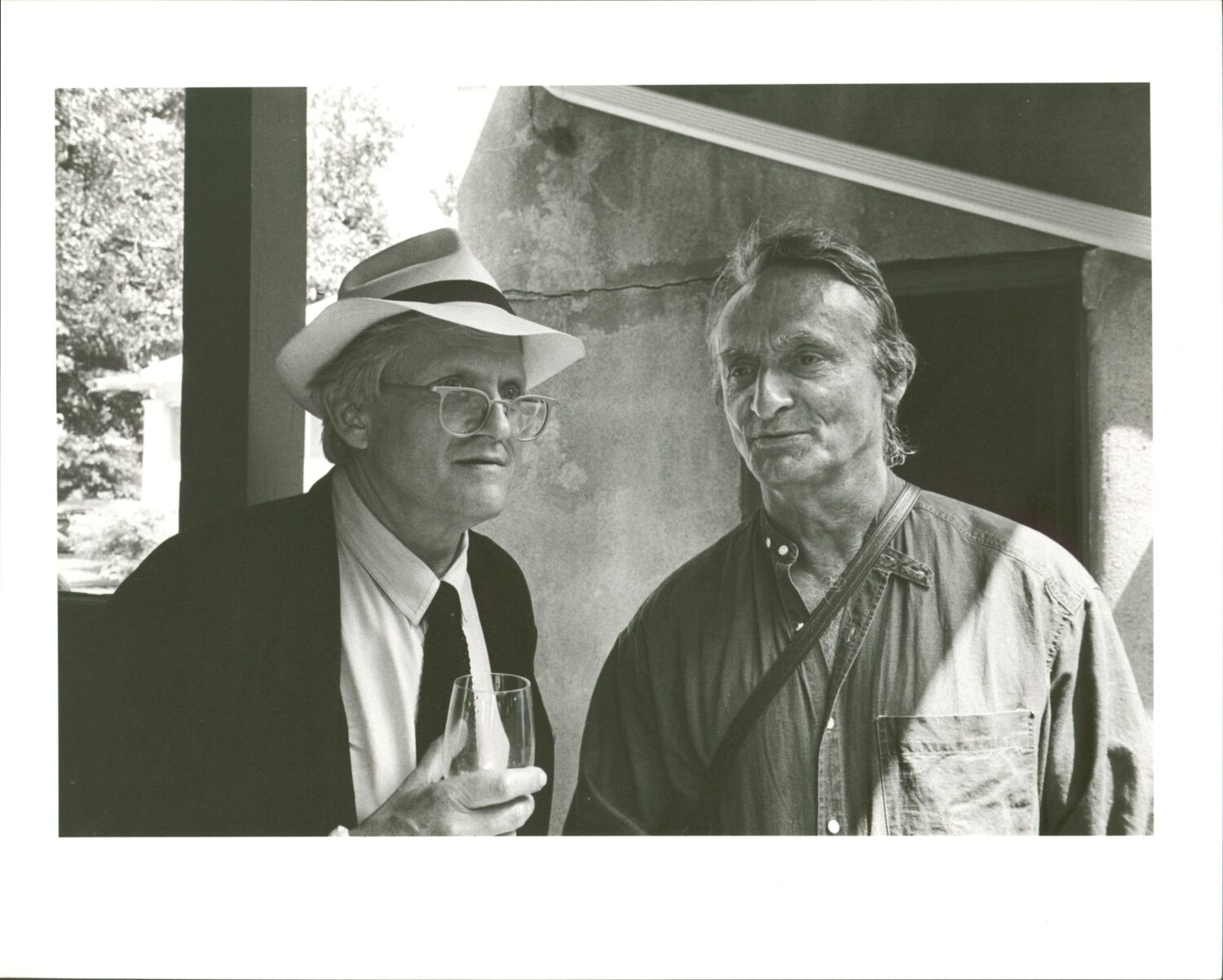
Allen Ginsberg: David Hockney & Larry Rivers, Henry Geldzahler’s funeral, Long Island, August, 18,1994 (©Allen Ginsberg. Courtesy of FaheyKlein Gallery, Los Angeles)
Alongside the photographs, the gallery hosts a preview of a larger forthcoming writing project. A Picture of My Mind: Poems Written by Allen Ginsberg’s Photographs — yes, by the photographs — is a collection of poems generated as direct responses to certain of Ginsberg’s images. Generated, that is, by an AI that was raised on a strict Ginsberg diet before being presented with the pictures and encouraged to respond to them in poetry.
Founded in late 2021 by writers Ana Maria Caballero, Kalen Iwamoto and Sasha Stiles, theVERSEverse.com is a hybrid literary and art collective. Their member Ross Goodwin, whose inventive “word.camera” (2018) turns digital image data into text, engineered the collaboration between the dead poet, the internet and the machine — all with the support of the Allen Ginsberg Estate and the Tezos Foundation. The results are alarmingly convincing — as evidenced by the new poem “Metropolitan Whispers,” a syncopated and elegant appreciation of what William Burroughs and an Egyptian sphinx have in common, which is quite a lot actually.
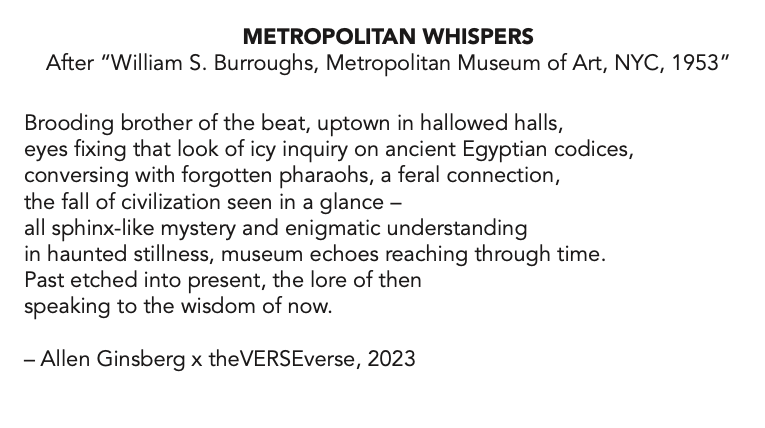
The AI appears to have absorbed the poet’s taste for experiments of meaning, for alliteration, jaunty spoken rhythms and interpretive punctuation, especially exclamation points — as well as an understanding of the function of both a portrait and a museum to transmit the textures of history. Ginsberg and his fellow counterculture creatives presided in life over more than one period of evolution and revolution in culture — maybe it makes sense that his spirit can now preside over another.
The exhibition and poetry preview are on view through September 23 at Fahey/Klein Gallery, 148 N. La Brea Ave.; faheykleingallery.com; and new poems are forthcoming at theVERSEverse.com.
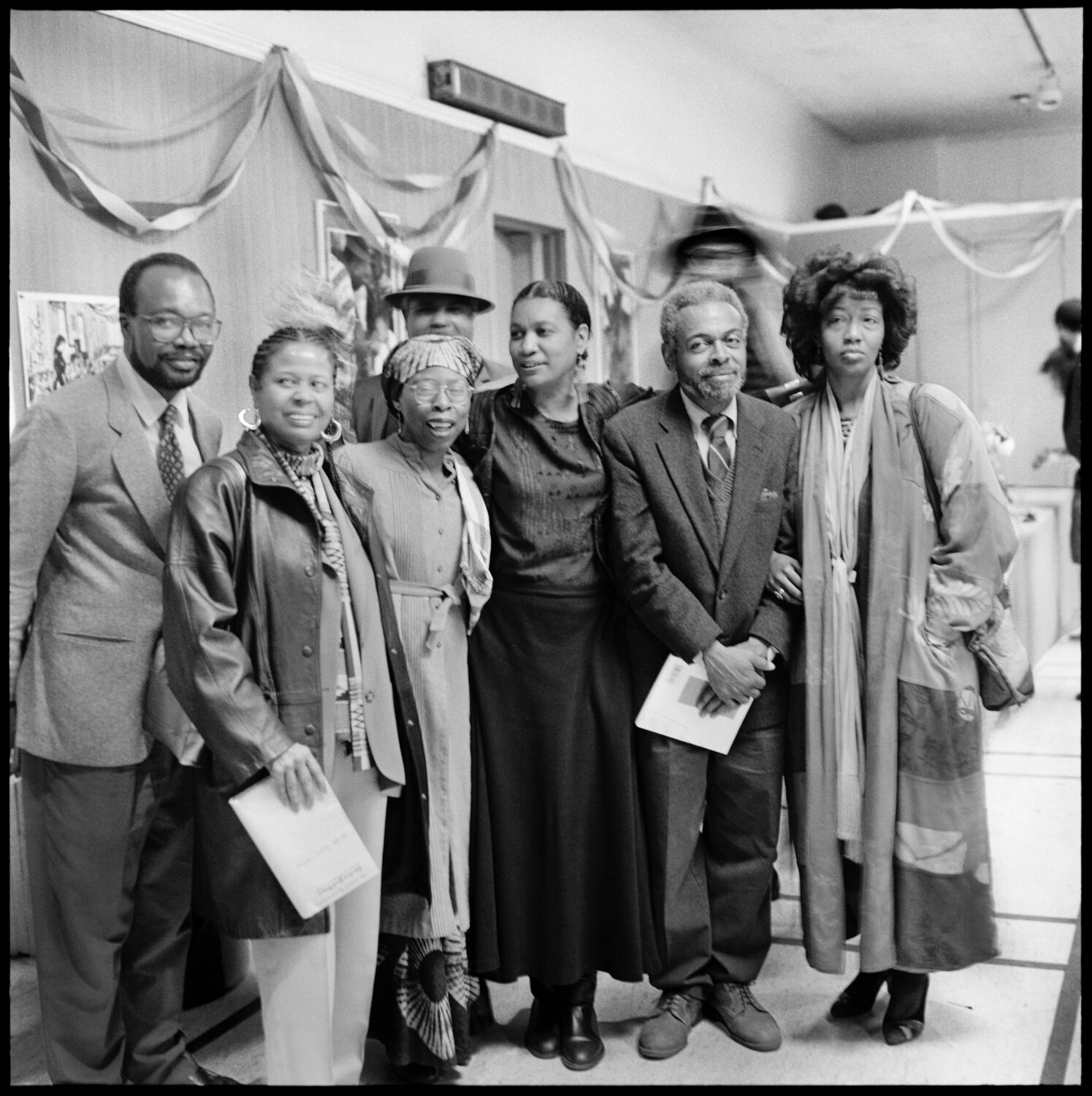
Allen Ginsberg: Amiri Baraka, Amina Baraka, Jayne Cortez, Rashidah Ismaili, and friends, Small Press Book Fair, December 2, 1990 (©Allen Ginsberg, courtesy of FaheyKlein Gallery, Los Angeles)
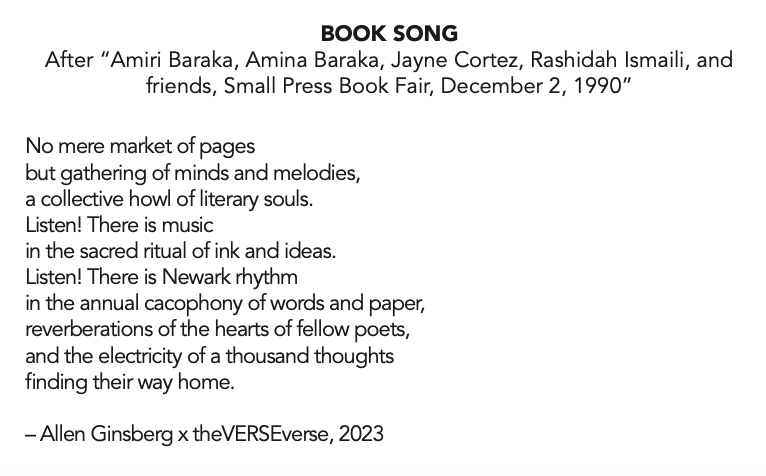
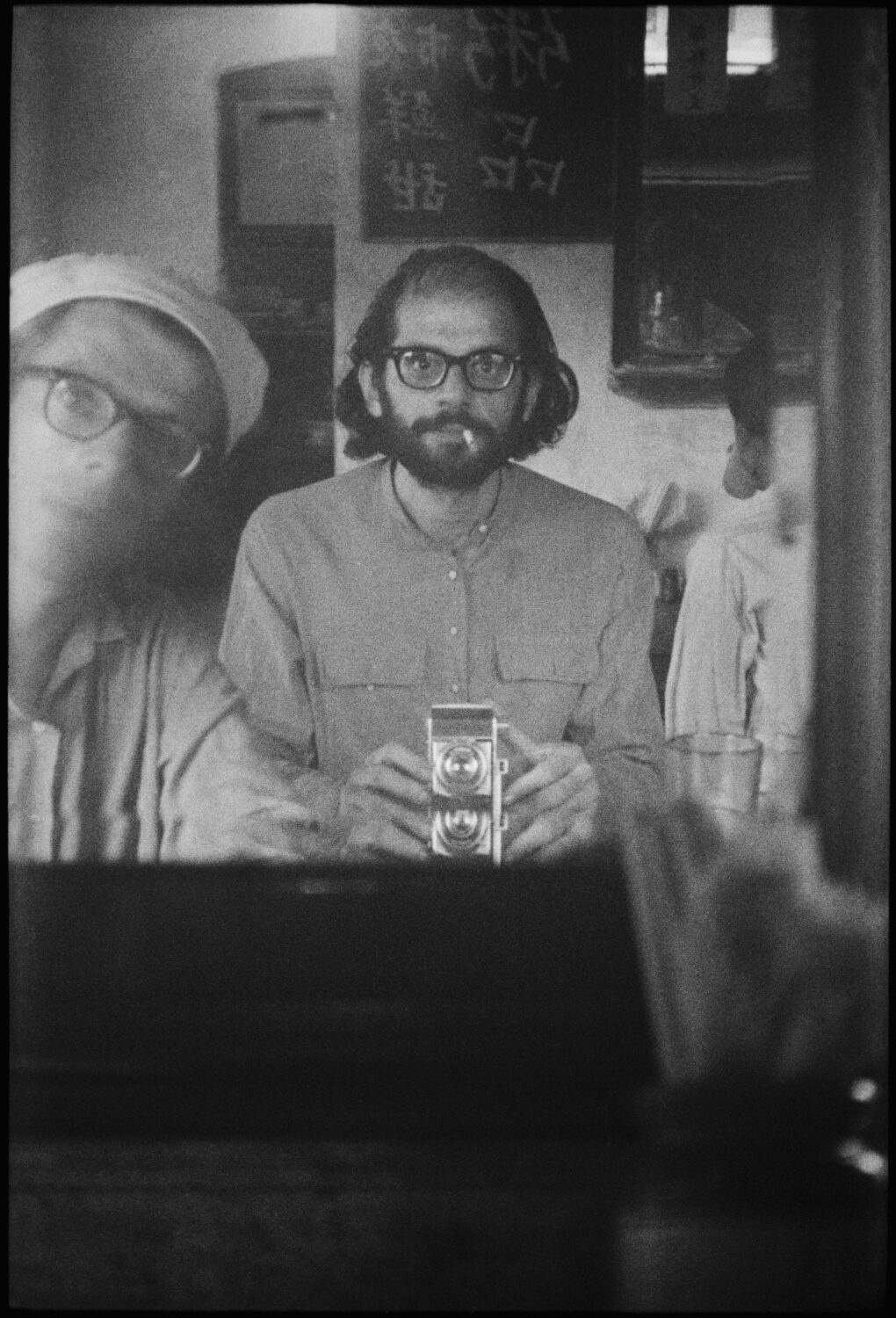
Allen Ginsberg: Calcutta Self Portrait with Peter Orlovsky, October 20, 1962 (©Allen Ginsberg, courtesy of FaheyKlein Gallery, Los Angeles)
/Editor’s note: The disclaimer below refers to advertising posts and does not apply to this or any other editorial stories.
Advertising disclosure: We may receive compensation for some of the links in our stories. Thank you for supporting LA Weekly and our advertisers.

